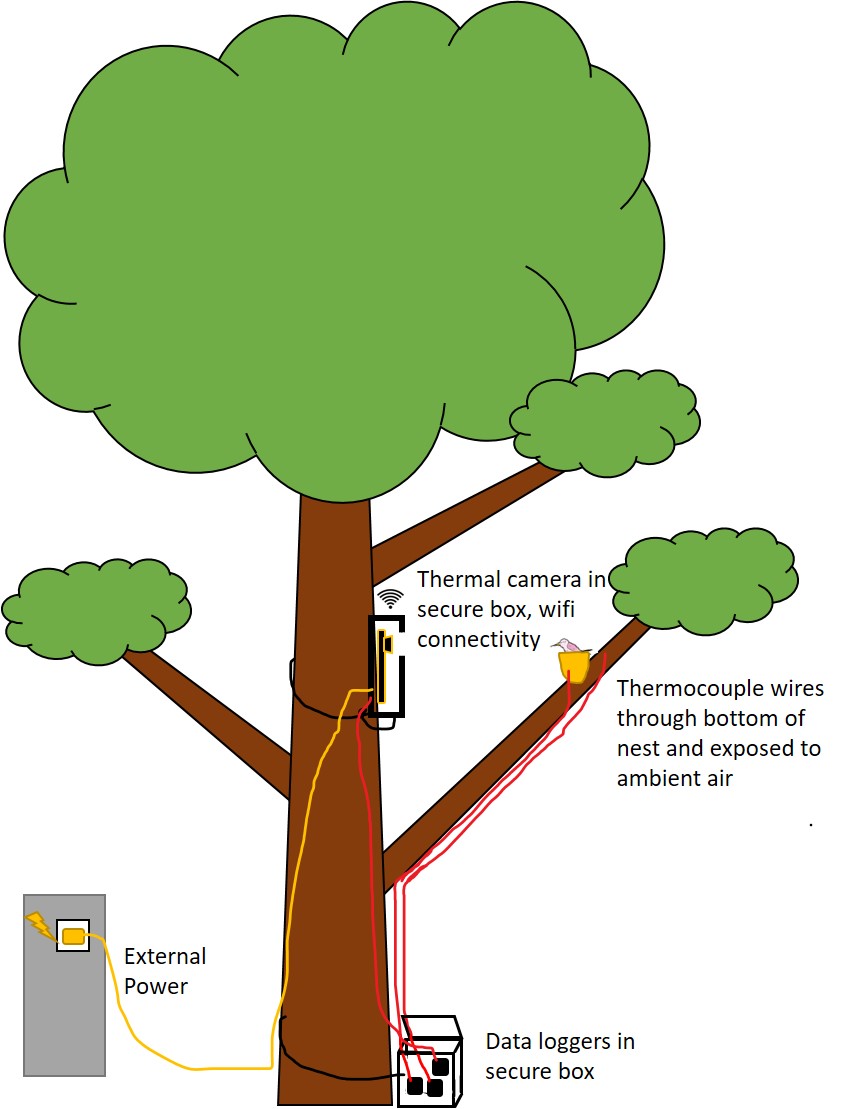Methods
Summary
Update 2/6/2017:
As with any project, we have needed to adjust our original methodology as the project has developed. Here are some of those adjustements:
1) We will primarily be using the FLIR Vue Pro R to thermally monitor the mothers throughout the day and night. This camera is much more appropriate for deployment in the field, and is much higher powered than the FLIR C2, which we will be using for up-close pictures of the eggs and nests when the mother leaves, as well as introducing thermal imaging to students.
2) We will not (in this season) be using thermocouple probes in order to minimize our invasiveness of the nest and birds.
Our first step will be to obtain the necessary temperature sensing technology, which will include the FLIR C2 thermal camera (http://www.flir.com/instruments/c2/), and thermocouple wire probes. As soon as we obtain this equipment, we will run control tests to evaluate the accuracy of the temperature measurements. Overall, this will involve setting up the full system (see diagram) in a controlled lab setting and simulate an active nest using a thermal coil sitting in a collected nest specimen (an abandoned nest from previous years). This will allow us to confirm that hummingbird surface temperature is a good proxy for body temperature and to develop efficient protocols. We will then extensively practice setting up the full system in the field so that when our experiments begin, field set- up will be as quick and noninvasive as possible.
Starting in early January, when Anna’s hummingbirds begin to nest in Southern California, undergraduate and high school students will be trained by one of our undergraduate researchers who is especially skilled at finding hummingbird nests. These volunteers will search for nests on campus and in the nearby Ballona Wetlands. They will use traditional nest searching techniques as well as using thermal imaging cameras, if it is determined to be effective. As soon as we find an active nest, we will carefully install the full system and begin continuous monitoring and data collection. We will closely monitor the activity to deal with challenges as they arise, and if all goes well, we plan to stream some live thermal videos of nests here on our site!
Finally, we plan to analyze thermal images and data using FLIR analysis software, and a program developed by collaborator Glenn Tattersall Ph.D., which will be used when appropriate.

Protocols
This project has not yet shared any protocols.